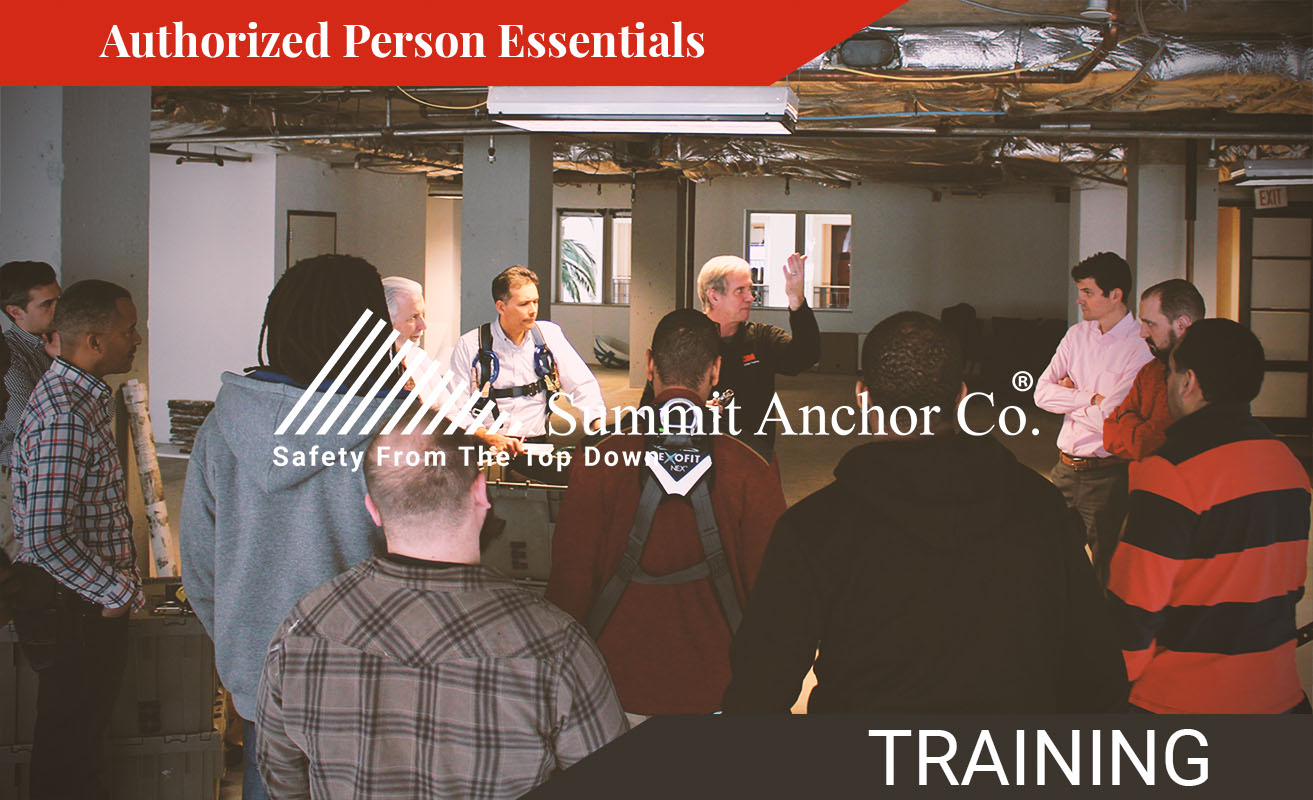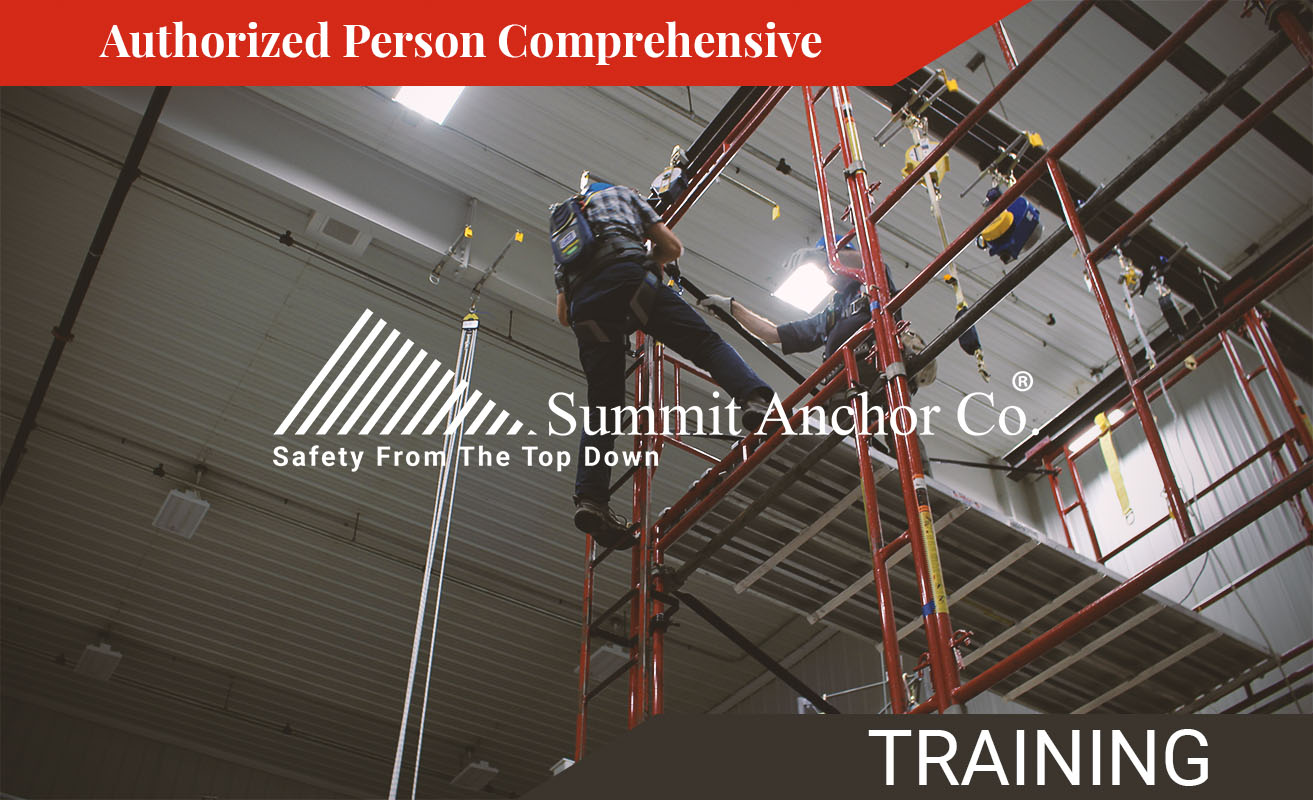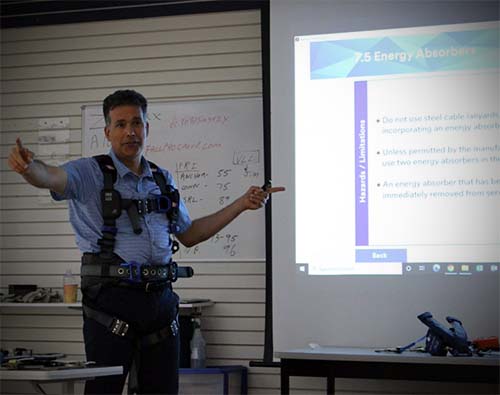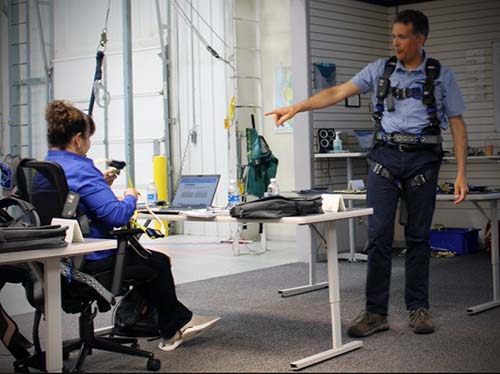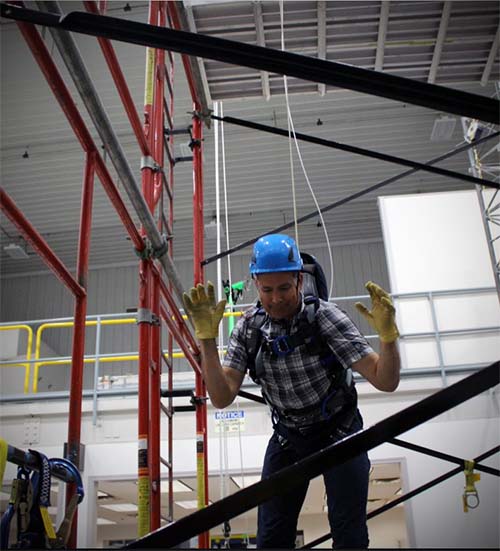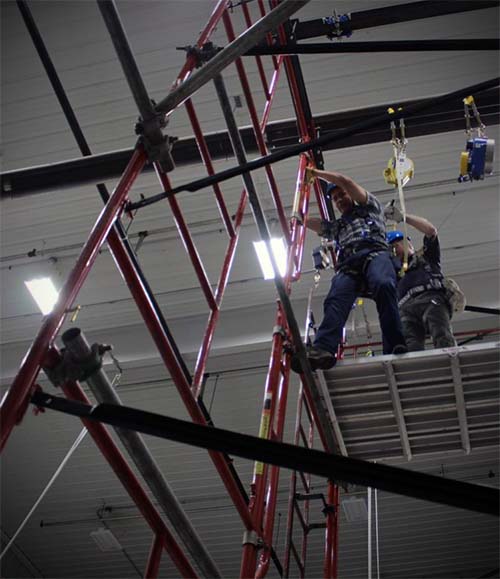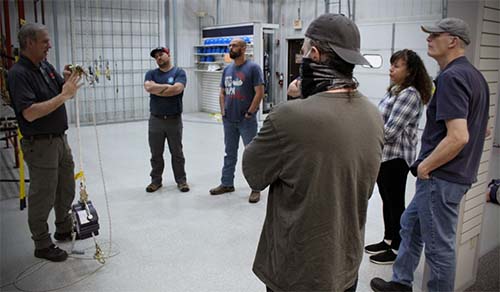Fall Protection Training
Now Available
Falls are one of the leading causes of serious work-related injuries, deaths, and citations according to OSHA. So, protecting workers from falls at job sites is serious business. Knowing how fall protection equipment works and how to properly use it is essential to employee safety and reducing employers’ liability.” Adding impetus to the employers’ responsibility to provide their employees safety training, In January 2022, OSHA increased fall-related penalties to $14,502 per violation, with willful or repeated offenses fined at $145,027.
Is fall protection training required?
YES fall protection training is an OSHA requirement if you work in a general industry or construction around “unprotected sides or edges that are at least 4 feet (6 feet for the construction industry) above a lower level.” (OSHA Fact Sheet). This means that anyone on a worksite at these height thresholds is required to have fall protection training, including employees using ladders. In fact, OSHA requires employers to “provide a training program for each employee using ladders” (1926.1060(a)).
Who is responsible for employees fall protection training?
According to OSHA, “The employer shall provide a training program for each employee who might be exposed to fall hazards. The program shall enable each employee to recognize the hazards of falling and shall train each employee in the procedures to be followed in order to minimize these hazards.” OSHA’s construction regulation section 1926.503 also requires “a certification of training.”
Did you know that Summit Anchor offers a certificate of training for fall protection to all? And you don’t have to be one of our anchorage customers to use our services. We provide on-site classes customized to your job site’s fall hazard risks.
We’d love to work with your team to make your job site as safe as possible.
What qualifies as acceptable fall protection training?
According to OSHA 1926.503, “The employer shall verify compliance with paragraph (a) of this section by preparing a written certification record. The written certification record shall contain the name or other identity of the employee trained, the date(s) of the training, and the signature of the person who conducted the training or the signature of the employer. If the employer relies on training conducted by another employer or completed prior to the effective date of this section, the certification record shall indicate the date the employer determined the prior training was adequate rather than the date of actual training.”
Here are some various kinds of training that OSHA recognizes for employees working at height:
Authorized Employee Essentials – 4 Hours
According to OSHA, an authorized employee means an employee who the employer assigns to perform a specific type of duty or allows in a specific location or area.
Authorized Employee Comprehensive – 8 Hours
According to OSHA, an authorized employee means an employee who the employer assigns to perform a specific type of duty or allows in a specific location or area.
Competent Person – 16 Hours
An OSHA “competent person” is defined as “one who is capable of identifying existing and predictable hazards in the surroundings or working conditions which are unsanitary, hazardous, or dangerous to employees, and who has authorization to take prompt corrective measures to eliminate them”.
Did you know that Summit Anchor offers a certificate of training for fall protection to one and all? You don’t have to be one of our anchorage customers to use our services. We provide on-site classes customized to your job site’s fall hazard risks.
We’d love to work with your team to make your job site as safe as possible. Call us to schedule a consultation or clink on the link to learn more.
Contact us today to arrange your fall protection class.
CONTACT US.
Whether your project is in Athens, Greece or Anchorage, Alaska, or all points in between, we are your full service fall protection provider.
Call Summit Anchor Company today to speak with one of our representatives.
✔ 3M Certified Safety Training Provider, meeting OSHA & ANSI requirements
✔ 3M Written Certification Record for each trainee passing course, per OSHA requirements
✔ 3M Written Course Materials Provided Each Trainee
Notes:
4 of the Top 10 most frequently OSHA cited violations of workplace safety standards involve fall protection and ladder safety as follows:
- Fall Protection – General Requirements (1926.501): 5,295 Cited violations
- Respiratory Protection (1910.134): 2,527 Citated violations
- Ladders (1926.1053): 2,026 Citated violations
- Scaffolding (1926.451): 1,948 Citated violations
- Hazard Communication (1910.1200): 1,947 Citated violations
- Lockout/Tagout (1910.147): 1,698 Citated violations
- Fall Protection – Training Requirements (1926.503): 1,666 Citated violations
- Personal Protective and Lifesaving Equipment – Eye and Face Protection (1926.102): 1,452 Citated violations
- Powered Industrial Trucks (1910.178): 1,420 Citated violations
- Machine Guarding (1910.212): 1,113 Citated violations
As of June 1st, Summit will offer on-site classes for either authorized or competent person fall protection training using the latest 3M training course materials. Upon successful completion of this course the student will receive a certificate recognizing they have completed the training required to meet OSHA and ANSI requirements.
As of June 1st, Summit will offer on-site classes for either authorized or competent person fall protection training using the latest 3M training course materials. Upon successful completion of this course the student will receive a certificate recognizing they have completed the training required to meet OSHA and ANSI requirements.
As of June 1st, Summit will offer on-site classes for either authorized or competent person fall protection training using the latest 3M training course materials. Upon successful completion of this course the student will receive a certificate recognizing they have completed the training required to meet OSHA and ANSI requirements.
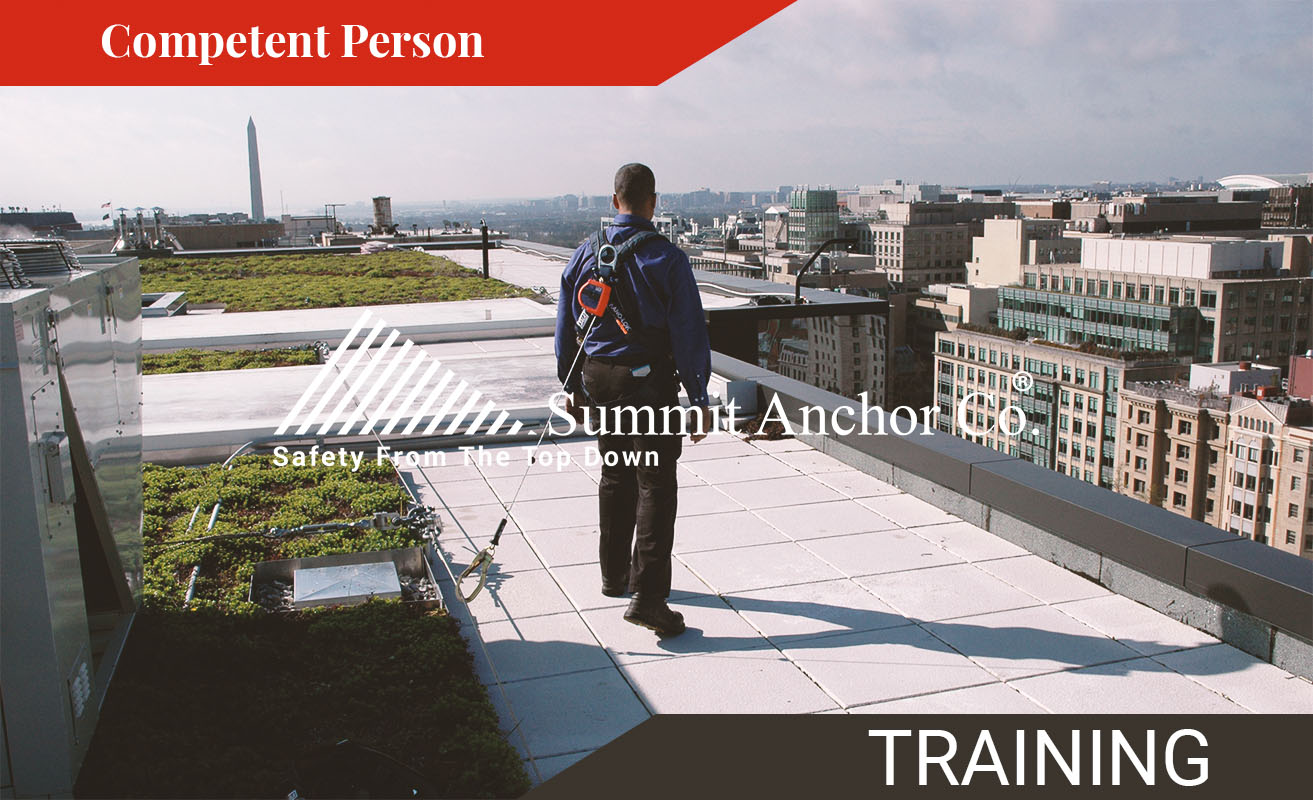
An OSHA “competent person” is defined as “one who is capable of identifying existing and predictable hazards in the surroundings or working conditions which are unsanitary, hazardous, or dangerous to employees, and who has authorization to take prompt corrective measures to eliminate them”.
COURSE DESCRIPTION:
This training enables the attendee to be responsible for the immediate supervision, implementation and monitoring of a managed fall protection program. Upon completion of this course, you will receive a certificate acknowledging you have met or exceeded OSHA and ANSI requirements as a Competent Person and Competent Inspector.
This course includes in-class lectures with slides and video as well as hands on scenarios applying theory discussed to practical workplace situations. It is a pass/fail program incorporating both written and practical examinations, and it is based on the requirements of the OSHA Regulations, ANSI Z359.2 as well as local legislation that will be discussed and reinforced. Attendees will learn practical solutions to difficult fall protection problems using appropriate tools and equipment.
DURATION:
2 days
RECOMMENDED ATTENDENCE:
Managers, immediate supervisors of individuals working at height, safety professionals or other key personnel that are responsible for the supervision, implementation and monitoring of a managed fall protection program.
TOPIC DISCUSSED:
- Regulations relating to all fall protection topics
- Fall hazard elimination and controls methods
- Fall hazard surveys and fall protection procedures
- Responsibilities of Competent Persons
- Detailed inspection of equipment components and systems
- Fall protection system assessments and determining when a system is unsafe
- Fall protection rescue procedures
- Selection and use of non-certified anchorages
- Fall hazard surveys
